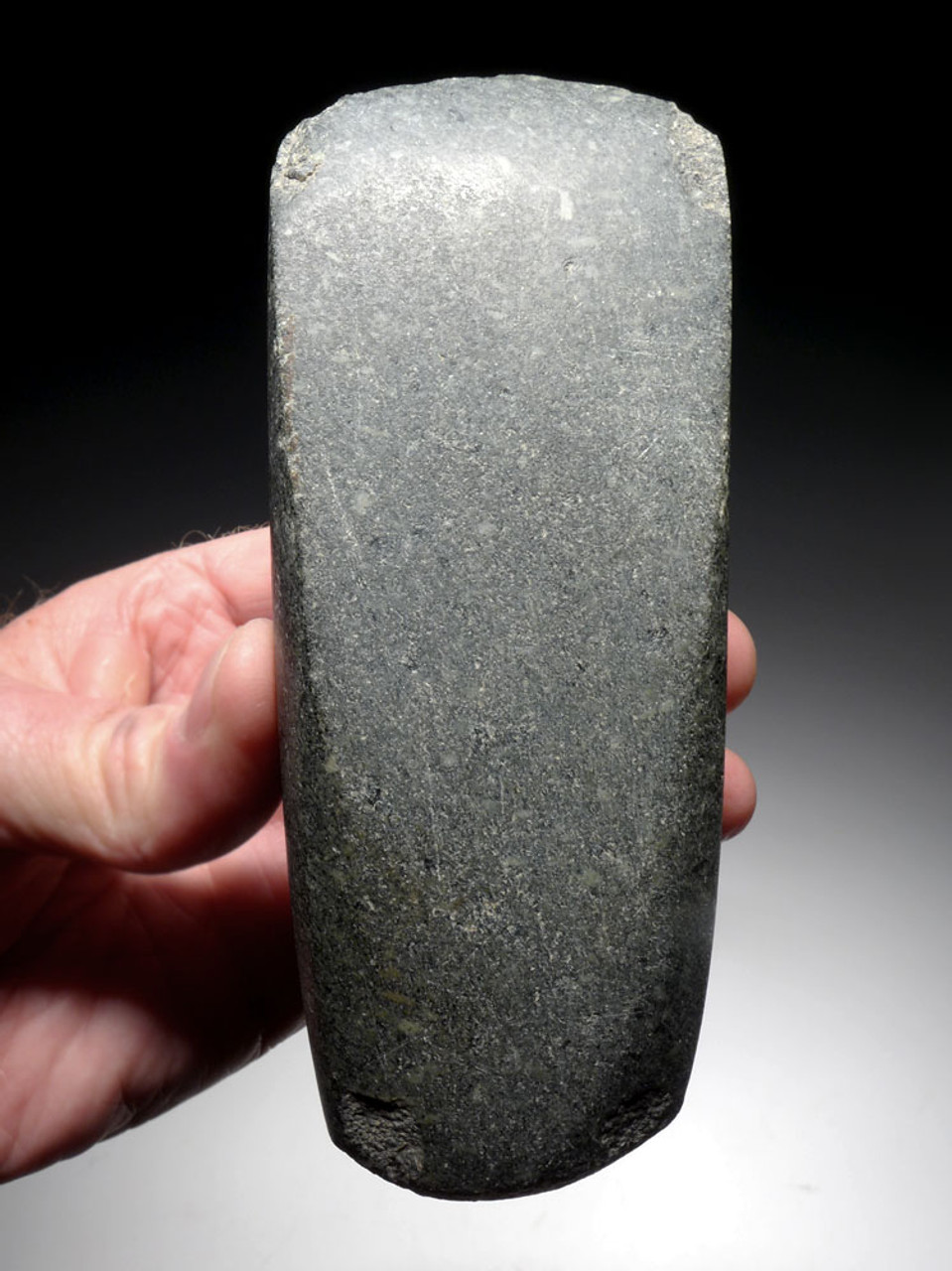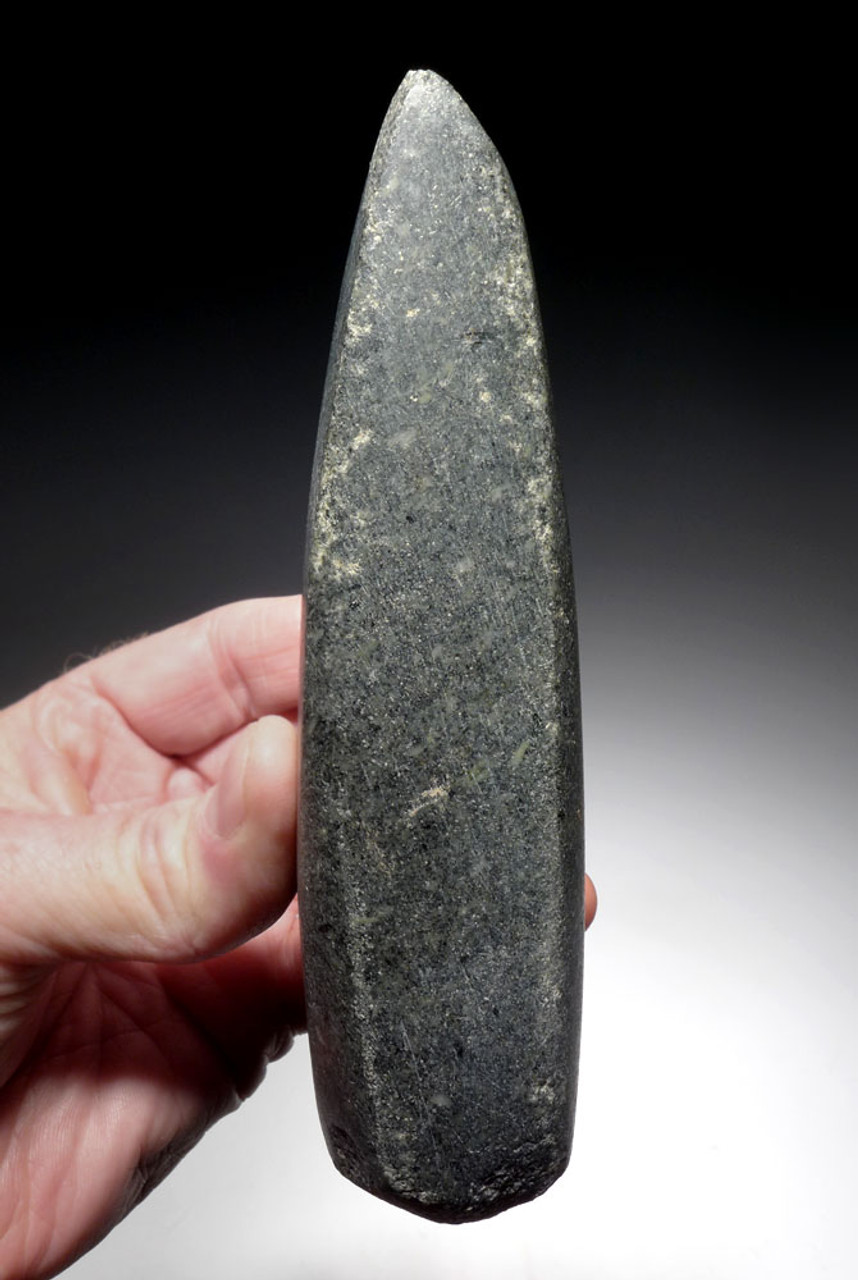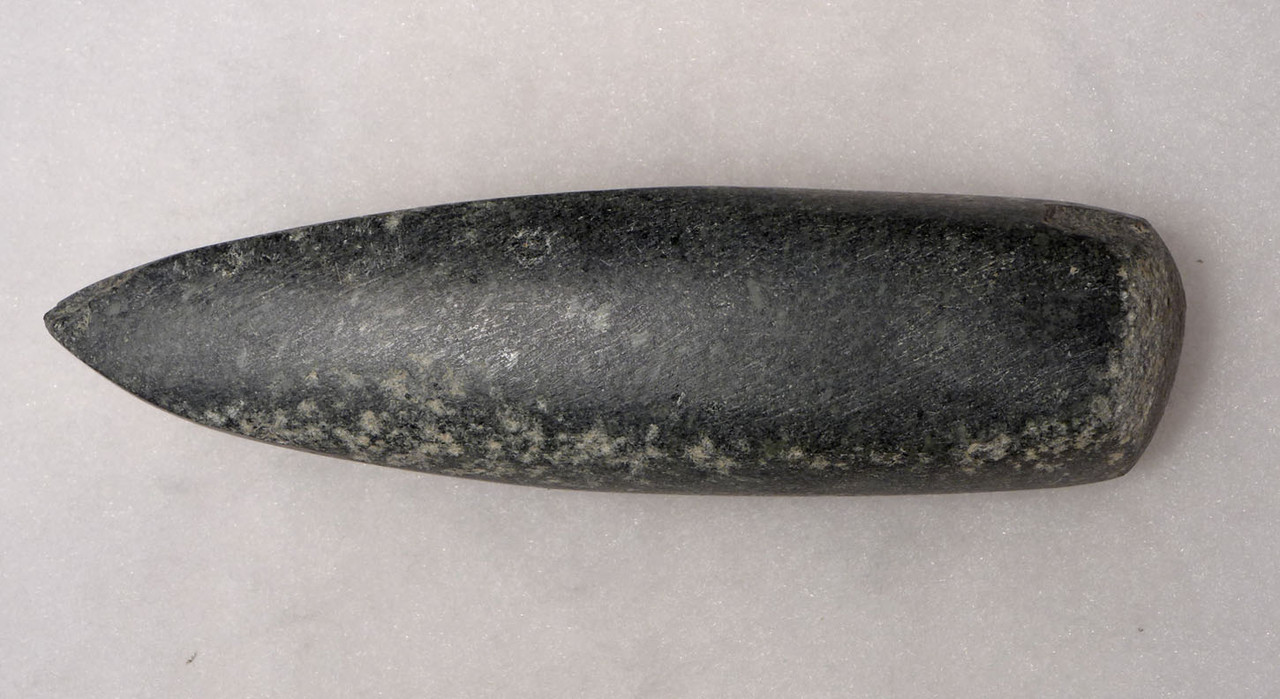Product Description
SEE MORE EUROPEAN NEOLITHIC ARTIFACTS
SEE MORE EUROPEAN BRONZE AGE ARTIFACTS
This rare, non-perforated stone battle axe was found in the Eastern Balkans and comes from the Neolithic - Chalcolithic Karanovo Culture. Battle axes like this were both, a weapon of prestige as well as a deadly effective weapon of war. Helmet or no helmet, a single blow to the head with an axe like this would have proven fatal. The inertia and narrow form would have easily penetrated helmet armor and inflicted a crushing mortal wound to the skull.
Made of hardstone and skillfully shaped with an aesthetic tapered form, the blade end shows ancient use wear. Wear is also seen on the hammer butt end. Weapons from the Karanovo Culture of the Balkans are rare prizes of any advanced collection as they are virtually absent on the open market. In the past 24 years, we have only acquired THIS ONE SINGLE non-perforated axe, and one single perforated example offered elsewhere on this website. Examples like this were both prestige burial objects for the deceased, but also highly prized weapons in battle. We acquired only a VERY SMALL group of rare Karanovo Culture items many years ago from an old German collection and once these items are sold, we will never be able to replace them.
We cannot emphasize enough to exercise considerable caution when encountering these axe-hammers on the market as forgeries abound! They are a classic, iconic weapon from this period and reproductions have been made for many decades, and sold to less knowledgeable buyers. There are more forgeries floating around the market than there are genuine specimens. While you can rub dirt over a modern ground copy, you cannot drive minerals deep into microscopic pores in the stone as authentic examples only possess. Furthermore, the sediment on original specimens cannot be cleaned off but a deep cleaning of a forgery will reveal modern grinding and crushing areas on the stone. Always deal with reputable and highly knowledgeable sellers that are able to differentiate a modern fake from an authentic specimen AND, get every purchase in writing with an unconditional guarantee of authenticity and correct identification, as we always provide.
HISTORY
The Karanovo culture is a Neolithic - Chalcolithic culture (Karanovo I-III ca. 62nd to 55th centuries BC) named after the Bulgarian village of Karanovo. The culture, which is part of the Danube civilization, is considered the largest and most important of the Azmak River Valley agrarian settlements.
Archaeologists discovered the Karanovo settlement in the 1930s when a tell (a settlement mound) was excavated at Karanovo. The hilltop settlement consists of 18 buildings, which housed some 100 inhabitants. The site was inhabited more or less continuously from the early 7th to the early 2nd millennia BC. The Karanovo culture served as the foundation of the East Balkan cultural sequence. The layers at Karanovo are employed as a chronological system for Balkans prehistory. This culture had seven major phases: Karanovo I and II, which existed parallel to Starčevo; Karanovo III (Veselinovo); Karanovo IV; Karanovo V (Marica); Karanovo VI (Gumelniţa); and, Karanovo VII, which emerged during the Early Bronze Age. Karanovo VI appeared to have collapsed around 4000 BC without any signs of conquest or resettlement.
Some of the main characteristics of the Karanovo culture are the white-painted pottery and dark-painted vessels obtained from the tell. These artifacts were particularly associated with the first and second phases. There is also the case of The Gumelnita Lovers, a terracotta statuette crafted from 5000-4750 BCE. This artifact, which was excavated at the Gumelnita Tell in southern Romania, is associated with the culture's notion of fertility. The Karanovo macroblade technology is also famous, which featured semi-steep and steep retouching as well as the use of yellow flint with white spots. This particular technology, which is also known as "Karanovo blade", emerged during the culture's early Neolithic phase. Scholars note its interesting length and width: 100 mm long and between 15 mm and 23 mm wide.
 US DOLLAR
US DOLLAR
 EURO
EURO
 AUSTRALIAN DOLLAR
AUSTRALIAN DOLLAR
 CANADIAN DOLLAR
CANADIAN DOLLAR
 POUND STERLING
POUND STERLING


























